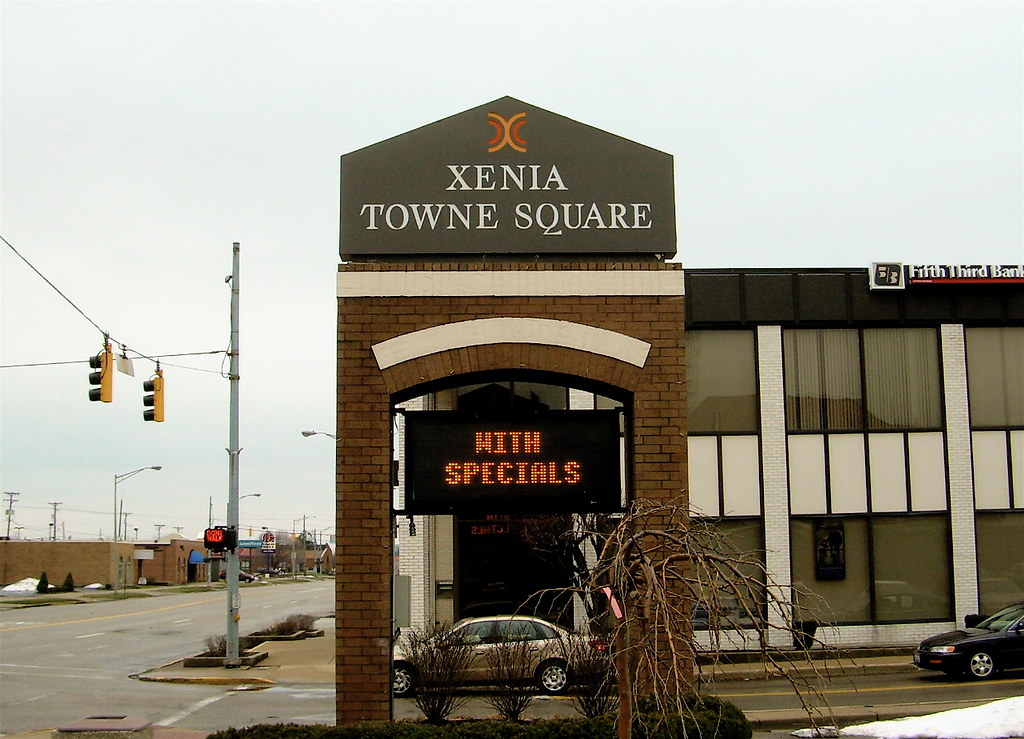It occurs to me how few place names begin with the letter X. I’ll admit that lots of places in China and other portions of the world do. However, those names derive from another language and gain their X during translation. I believe we need to distinguish the set of names converted from foreign logographic and alphabetic systems from those that begin with X natively.
I’ll also focus on the United States, not because I don’t appreciate places like Xanten, Germany, Xoxocotla, Mexico, and Xinguara, Brazil, but because I can save those for another day. Maybe.
The phenomenon expresses itself in the U.S. primarily with a plethora of Xenia towns. Xenia derives from an ancient Greek concept of hospitality and generosity towards guests. That seems like a nice enough name for a town. It’s like calling a city “Welcome” except with a fancier twist.
Classical Greek hasn’t received much attention in the U.S. educational system in a long time so it’s not surprising that (1) Xenia seems like an odd designation today and (2) the set of Xenias generally trace their founding to the 19th Century when classical education was in vogue.

Also, let’s not confuse it with Zinnia the similar-sounding flower, like I did when I first started searching. One might think that a nice bunch of flowers would serve as an excellent sign of hospitality. However Xenia and Zinnia are not related: Zinnia derives from the name of an 18th Century German botanist, J. G. Zinn.
Searching for Xenia
I found several Xenia locations using the USGS Geographic Names Information System. Some of them are more remarkable than others.

- Ohio: The most significant of the bunch with about 25,000 residents.
- Illinois: about 400 inhabitants
- Kansas: basically a crossroads
- Colorado: might have been a railroad stop but not much today
- Dallas Co., Iowa: USGS references the Iowa Geological Survey, Volume 16, Annual Report, 1905. It’s maybe a few houses and a cemetery
- Hardin Co., Iowa: USGS references A.T. Andreas’ Illustrated Historical Atlas of the State of Iowa, 1875. Likewise, it’s nothing more than a few houses and a cemetery presently
- Xenia, Missouri: the USGS doesn’t even provide lat/long coordinates, and mentions that it’s part of the “Ramsay Place-Name Card Collection 1929 to 1945” which leads me to believe it probably no longer exists
Less Common X’s
I guess Iowa gets the prize for having two distinct Xenia towns. However there are also a few oddball X towns that sometimes get mentioned. The U.S. Geological Survey considers all of these populated places.
- Xenophon, Tennessee. I guess it may have been a town in 1896 when the USGS recorded it but it doesn’t look like much now
- X-Prairie, Mississippi: the coordinates correspond to a spot where Prairie Point Road intersects with Deerbrook Road. Could it be shorthand for Prairie Crossroads? It has a church with the name — that’s good enough for me.
- X Crossing, Montana: Appears to be the middle of nowhere.
- Xanadu, Utah: doesn’t look much like more than a typical suburban subdivision.
Ex-X’s
I must admit that I love the repetitiousness of Ex-X. It also reminds me vaguely of the Country song by George Strait (All my ex’s live in Texas… and that’s why I hang my hat in Tennessee), but that’s irrelevant. An Ex-X would be a populated place that once began with an X but has since been changed to something else.
- Converse, Indiana and Atlanta, Illinois both began their lives as Xenia
- Xana and Xanacga were both located in San Diego County, California. They were settlements listed in the Smithsonian’s Handbook of American Indians North of Mexico in 1907. However the USGS does not provide lat/long coordinates for either place.
- Odessadale, Georgia was once called Xerxes, with the post office retaining the name until 1900.
- The nuns at the University of St. Mary in Leavenworth, Kansas were once served by the Xavier Post Office, named for Saint Francis Xavier. It existed at least until 1978 when it was entered into the USGS database but it has since been disestablished. While there are many Xavier names in the database this is the only one listed as a populated place, which frankly seems a bit surprising. One might expect more places named for a founding member of the Jesuits.
I can’t guarantee I found every X place lurking in the United States, however this list probably covers a large percentage of the total. Try that with any other letter of the alphabet!

Leave a Reply